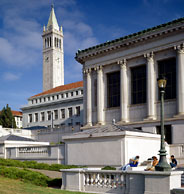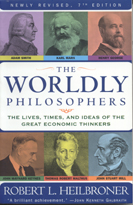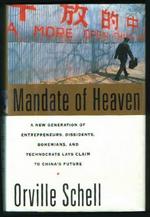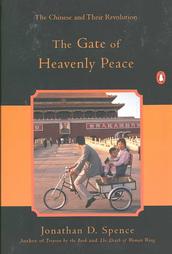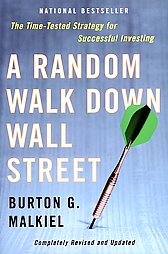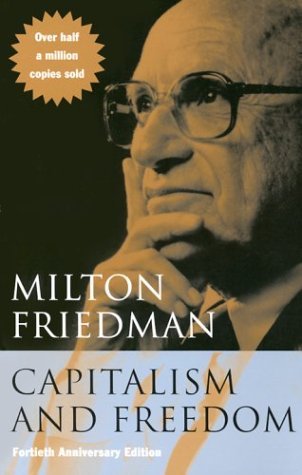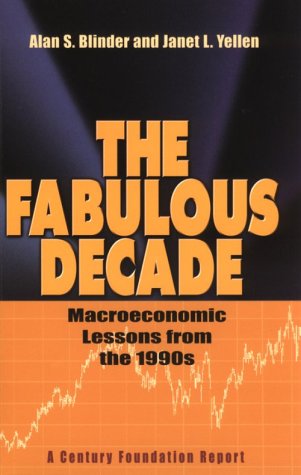OPEC Approves Cut to Output by 1 Million Barrels
Bad news for everyone, except OPEC members. Remind us oil crisis in the middle of the 1970s, when OPEC cut its production.
From New York Times
After a week of informal talks, the president of OPEC, Edmund Daukoru, said today that the oil cartel had agreed to trim production by 1 million barrels a day, although the group’s members are still negotiating over how the cut will be divided among them.
But the confusion surrounding OPEC’s position and the group’s inability to reach a formal agreement quickly sent oil prices to their lowest level this year. Some OPEC members are calling for an emergency meeting next week to formalize the deal, which is still not official.
Investors were unimpressed. The benchmark contract for light, low sulfur crude fell 1.5 percent on the New York Mercantile Exchange to trade at $57.65 a barrel this afternoon, the lowest since February, erasing small gains from earlier in the day. Market analysts said that a report from the International Energy Agency, forecasting slightly lower demand for oil than anticipated in 2007 because of slower growth in the United States, weighed much more heavily on the market than the OPEC announcement.
Edmund S. Phelps, Nobel Prize Winner in Economics
From the New York Times:
Edmund S. Phelps, a Columbia University professor, was awarded the Nobel Memorial Prize in Economic Science yesterday for his contribution to a sophisticated explanation of how wages, unemployment and inflation interact with one another.
The explanation holds, in essence, that wages and inflation tend to rise in tandem, one pushing up the other, until the unemployment rate reaches an “equilibrium” or “natural” level at which prices no longer rise.
These trade-offs are often considered by Federal Reserve policy makers in setting interest rates and are still a central element of mainstream economic thinking. But the relationships among these factors have eroded over time, many economists say, contributing to assertions from both the left and the right that the Fed has sometimes gone too far in squeezing economic growth in pursuit of a theory that no longer fits the real world.
Mr. Phelps, who is 73, is a latecomer to the Nobel for work in this field. He elaborated in the late 1960’s on a concept first introduced by A. William Phillips, a British economist. Mr. Phillips described, in a 1958 paper, how lower unemployment pushes up wages and vice versa. The trade-off came to be known as the Phillips curve, and the name stuck through various permutations.
Mr. Phelps brought inflation into the equation, and also inflationary expectations. So did Milton Friedman, almost simultaneously, and in the Nobel that Mr. Friedman won in 1976, this work was included in the citation.
“Ned Phelps was clearly on everybody’s short list to win a Nobel,” said Robert M. Solow, himself a Nobel laureate in economics.
Six Nobels for 2006 have been awarded so far, and all have gone to Americans. Mr. Phelps, in addition, is the fourth economist at Columbia to win a Nobel in the last decade. The award, which carries a prize of $1.37 million, also cited his work in analyzing the intricate relationship between behavior and expectations and the role of investment in education and research.
But Mr. Phelps was mainly recognized for his contributions to an understanding of the trade-offs involving inflation, wages and unemployment. He offered more detail than Mr. Friedman about how expectations are formed and how they are affected by incomplete knowledge.
Neither workers nor managers have enough information, Mr. Phelps found, to accurately assess what is happening to wages and prices and each, in making its demands, is susceptible to miscalculation.
“I’ve tried to put people into economic models by being more realistic about the situations in which they find themselves,” Mr. Phelps said in an interview yesterday. He learned of the award in a 6 a.m. telephone call from Stockholm where the Swedish Academy of Science, which selects Nobel winners, has its headquarters.
“My wife took the call and passed the phone to me,” Mr. Phelps said.
The Phillips curve, as elaborated by Mr. Friedman and Mr. Phelps, holds in effect that in the early stages of a wage-price spiral, both workers and managers settle for increases that are less than actual inflation. But gradually a wage-price spiral develops, and prices rise without any change in the unemployment rate.
Finally, there is a reaction. As the economy heats up, central bankers step in to push up interest rates in an effort to control inflation by slowing the economy. The unemployment rate begins to rise, and if the nation is lucky, unemployment settles at the natural rate, which means the rate at which inflation holds steady.
In the 1980’s and early 90’s, economists put this natural rate as high as 6 percent, and the Fed, aiming for this target, sometimes ended up pushing the economy into higher unemployment and recessions.
“For me,” Mr. Solow said, “there was really only one short period, in the 1970’s, when this theory really worked.”
Employers then had more power to raise prices than they do in today’s global economy, and workers had stronger unions to help them bargain for higher wages. “Since the 1970’s,” Mr. Solow said, “the natural rate of unemployment, this key rate, has been very unstable.”
Indeed, Fed policy makers found in the 1990’s that unemployment could fall much more than they anticipated without causing inflation to escalate.
“At this point,” said Jared Bernstein, a senior economist at the labor-oriented Economic Policy Institute, “the concept does more harm to the country than good.”
Mr. Phelps himself has become less than enchanted by his findings. “The ‘natural unemployment’ rate,” he said, “leaves people with the idea that there is no hope. It is an act of nature that cannot be repealed by man.”
Mr. Phelps was born in Evanston, Ill., but at age 6 he moved to a New York suburb, Hastings-on-Hudson, after his parents lost their jobs in the Depression and his father found a new one in Manhattan.
At Amherst College, he took a course in economics to please his father, and found himself hooked, particularly by the issue of unemployment. He received his Ph.D. from Yale in 1959 and joined the Columbia faculty in 1971 after teaching stints at the Massachusetts Institute of Technology, Yale and the University of Pennsylvania.
He and his wife, Viviana Montdor Phelps, an interpreter fluent in four languages, have lived for 32 years in a three-bedroom apartment overlooking Central Park. They own neither a car nor a country home, not wanting the bother of maintaining a second residence, Ms. Phelps said. They like to travel, including trips to Argentina, his wife’s native country.
“We never had enough money to buy an apartment as large and as comfortable as the one we live in,” she said, “and the rent for this one is relatively low.”
What is Google? A Search Engine
The New York Times raised a very good question on Google’s recent acquisition of YouTube: Should Google integrate YouTube and risk losing one of the hottest brands on the Internet, or leave YouTube independent and risk diluting its own powerful brand?
The search engine overlord has made more than 15 major acquisitions in areas as diverse as blogging,personalized search, satellite imagery, image management and cellular phone technology, the newspaper said.
The Google sprawl didn’t make the founders happy. Rather it made users confused. And new products one-level down from the home page drew far less attention and traffic than Google would be comfortable with.
According to Alexa, a Web information company, 72 percent of those who use google do so to search from its home page. Another 10 percent use it for e-mail and 8 percent for its Web-based image search. Video has been a straggler, at 3 percent, the newspaper said.
But with the stable of talent that Google has built, why not develop its own YouTube?
Its engineering teams have, after all, created services, including Google Calendar, Mail and Spreadsheet as well as language translation technology built into Google’s search engine. More than a dozen services — including Google Video, Google Maps and Google Desktop Search — have come from the company’s advanced research arm, Google Labs.
But those creations are complemented, if not overshadowed, by its acquisitions. Still, except for Google Earth, not one has become an unqualified success or market leader.
Moreover, with the exception of advertising-related technology acquisitions, Google has yet to develop significant revenue streams from its acquisitions. Its Picasa image management program allows users to purchase photo prints, and the company sells a commercial version of Google Earth for $400, but neither of those are major businesses yet.
YouTube is different from Google’s previous acquisitions not because it has a proven business model — it does not — but because it comes with an established audience (read the full news story).
The Newly Appointed Airbus CEO Steps Aside
Christian Streiff, who was just appointed as CEO of Airbus this July, resigned on Oct. 9. Streiff clashed bitterly with EADS, the parent company of the embattled European planemaker, over how much freedom had had to overhaul the company, which is plagued by the repeated delay of the flagship A380 and by manufacturing disorders.
Streiff demanded considerable freedom to impose 2 billion euros ($2.5 billion) a year in cost cuts at Airbus, reported the New York Times.
But EADS has been determined to assert its control over Airbus since last June, when it was caught off guard by costly delays in the production of the A380 (read the rest or the news report).
10%, China’s GDP Growth in Next Year
Next year China’s GDP will grow as much as 10 percent, said China Academy of Social Science.
This number, generated by China’s government owned think tank, is comfortable to the government, who has been worried about inflation and overheating, and have been managing to cool the economy while at the same time to avoid a stagflation. On the other hand, 10 is also a number Chinese like to see, and it’s easy to remember.
The problem is whether this is plausible, or even close to being plausible. The government, however, is good at generating comfortable figures. So even the economy gets hard-landing or overheating, I am pretty sure the public figure will be, well, around 10.
More projections from the academy: $150 billion, trade surplus in this year; $120 billion, trade surplus in 2007, quite soothing. 54 percent and 60 percent, investment rates this and next year, not so happy. 1.3 percent and 11. percent, CPI in this and next year, very delightful.
Foreign Property Investment Half of China’s Total
Foreign direct investment in China’s property market in the first half of this year reached $2.77 billion, about 60 percent of China’s total real estate investment, said Jones Lang LaSalle, a real estate consultancy company. Almost all of the overseas investment in China’s property market is betting on the appreciation of the yuan.
In China’s strictly controlled capital market, real estate is the only place where foreigners can directly drop their money. The hot money from abroad pushed up property prices, and the hiking prices assimilated most Chinese’s life savings.
Chinese authorities have released several regulations to cool the property market, including rules discouraging foreign investment. Those rules were mostly disobeyed by local governments, who seized the property industry as their pivotal source of tax and revenue.
Even if being correctly carried out, those rules can’t quench the investment fever. Overseas investment did exacerbate the property fever, but the skyrocketing housing prices are rooted on the overall demand. The urbanization generated much more housing demand than the market was able to provide. And this trend won’t stop in the following 10 years.
Despite the seeming decisive stance of China’s government to curb the market, real estate is still the best haven where idle American pension funds can rest.

